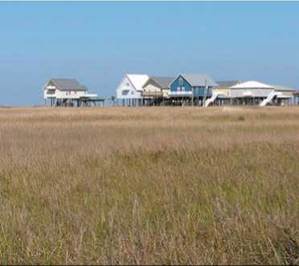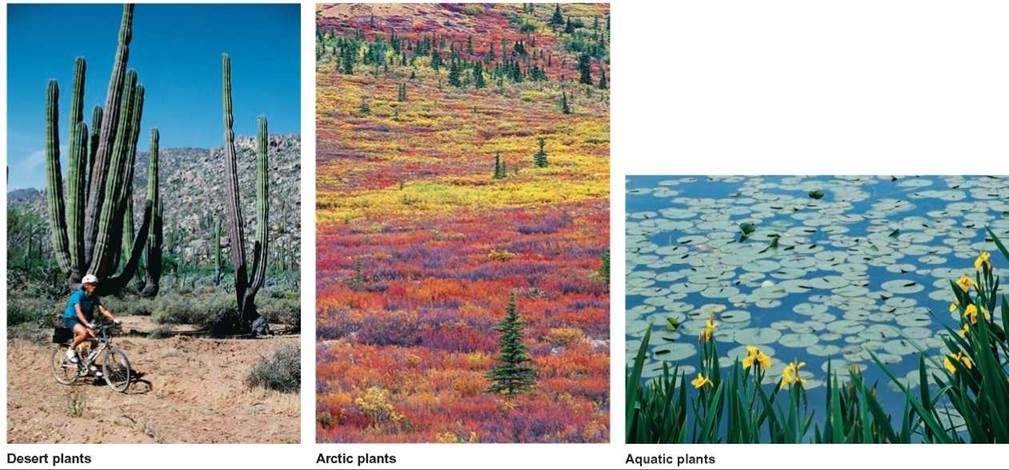CONCEPTS IN BIOLOGY
PART V. THE ORIGIN AND CLASSIFICATION OF LIFE
22. The Plants Kingdom

Plants Can Reduce Hurricane Damage
Protect our coastal vegetation.
Hurricanes are generated over warm ocean water. Warm air rises, and when the proper conditions exist, the rising warm air contributes to a tight, circular motion of the air and a hurricane forms. Hurricanes cause damage as a result of two things—high winds and a wall of water known as a storm surge that results from the high winds blowing over the surface of the water and the low barometric pressure. Both the strength of the wind and the height of the storm surge are made less severe by vegetation. Hurricanes lose their source of hot air and weaken when they move over land. Although urban areas on the shore are unprotected, urban areas that have healthy marsh between them and the ocean are protected because hurricanes weaken as they pass over the marshlands.
Vegetation provides a porous barrier to the flow of water. It does not stop the water, but reduces the rate at which the water flows into an area and makes the storm surge less severe. Also, the roots of the vegetation tend to bind the soil together and prevent wetlands from being washed away.
Action can be taken to protect current mashes and restore those that have been destroyed. These actions are low in cost compared to the cost of repairing damage to homes, roads, bridges, and other infrastructure. The plants require little maintenance and can reproduce and repair damage done by hurricanes.
More people need to recognize the importance of vegetation and the preservation of coastal wetlands. Various conservation groups are sponsoring revegetation projects to help moderate future damage from hurricanes and need the support of governments and volunteers.
• Why might plants be better at controlling storm surge than a concrete wall?
• Why might plants be a more cost-effective way of controlling storm surge?
• Should people be prohibited from destroying coastal vegetation?
ü Background Check
Concepts you should already know to get the most out of this chapter:
• The processes of natural selection and evolution (chapter 13)
• Structural and life history characteristics are used to classify organisms (chapter 20)
• Plant cells differ from animal cells (chapter 4)
22.1. What Is a Plant?
Plants are eukaryotic, multicellular organisms that have chlorophyll a and chlorophyll b and carry on photosynthesis. Their cells have cellulose cell walls. They also have specializations for life on land. Plants are, for the most part, terrestrial organisms that can live in just about any environment, including deserts, arctic regions, and swamps (figure 22.1). Many live in shallow freshwater (e.g., water lilies, cattails), and a few live in shallow oceans (e.g., eelgrass, mangroves). Within the estimated 300,000 species, plants show a remarkable variety of form, function, and activity. Plants range in size from tiny, floating duckweed the size of a pencil eraser to redwood trees over 100 meters tall. There are some that lack chlorophyll and are parasites, some that digest animals, and some that have mutualistic relationships with animals.

FIGURE 22.1. Plant Diversity
Plants are adapted to a wide range of terrestrial habitats, including such extremes as deserts and arctic regions. Many live in freshwater and a few live in shallow marine environments.
22.1. CONCEPT REVIEW
1. List three characteristics shared by all plants.